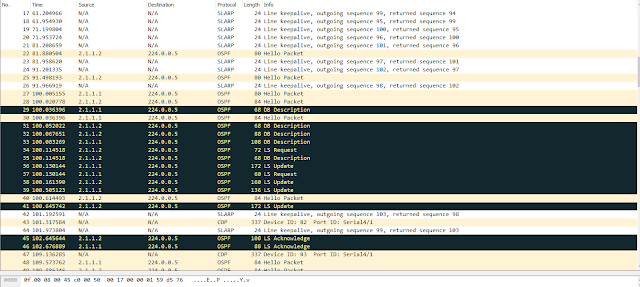IGMP
IGMP (Internet Group Management Protocol) is a networking protocol that is used with multicast by hosts and routers. Hosts that want to receive traffic from a certain multicast group with a router using IGMP. There are three versions of IGMP; versions 1, 2, and 3.
IGMP (Internet Group Management Protocol) is a networking protocol that is used with multicast by hosts and routers. Hosts that want to receive traffic from a certain multicast group with a router using IGMP. There are three versions of IGMP; versions 1, 2, and 3.
Enable communication between a router and connected hosts.
The two most important goals of IGMP are as follows.
1. To inform a local multicast router that a host wants to receive multicast traffic for a specific group.
2. To inform local multicast routers that a host wants to leave a multicast group.
IGMP Versions
IGMP v1
IGMP v2 (by default)
IGMP V3
Internet Group Management Protocol version 1
IGMPv1 uses two specific message structures
Report message
Used by the client to join the group
Query messages
Used by router to see if the member of the group still exists
Always sent to 224.0.0.1 by multicast routers.
Internet Group Management Protocol (contend)
- R1 sends periodic IGMP queries to the 224.0.0.1 address.
- If only `one member group per subnet sends the IGMP report message to the router – in this case, H2
- While the others host H1 and H3 suppress theirs.
- IGMP query interval is 60 seconds and 180 delay timers.
Internet Group Management Protocol version 2
IGMPv2 brought several improvements.
- leave group messages from the host to the router. (apart from report and query)
- tunable timers
- queries election
- group-specific queries
IGMPv2 leave group
When a host wants to leave the group they will send an IGMP leave message to 224.0.0.2
Then the router will query the IGMP query message to 224.0.0.1 (all
host multicast address)
As long as at least one client is in this group. The switch will
forward the IGMP membership report back to the first hop router.
Group specific queries
- In version 1 query is sent to all hosts on 224.0.0.1
- In version 2 query was generated to only devices in that specific group
Internet Group Management Protocol version 3
Allows us to do source-specific multicast V1/v2 only support group specific multicast (*, g) join any
source / specific group)\ V3 supports source-specific multicast (s,g) join.







.png)















